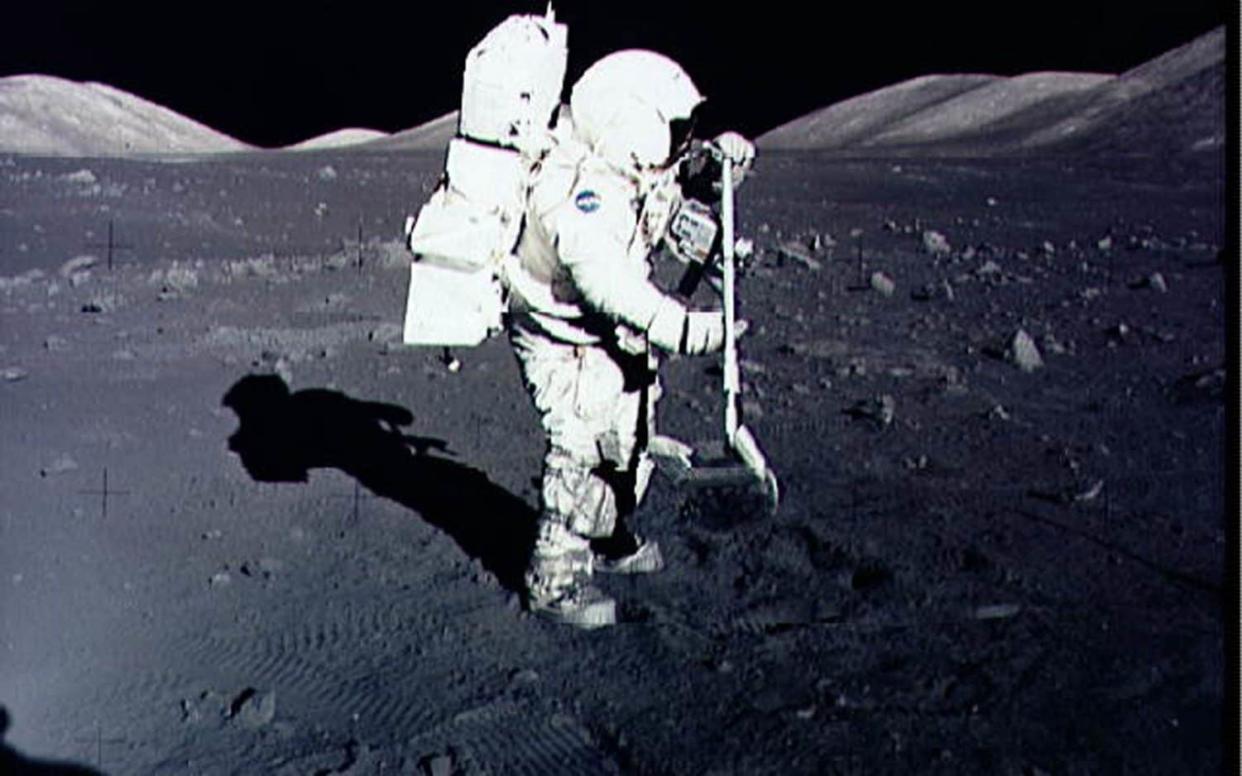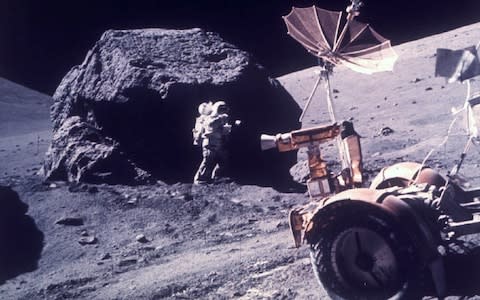Mining on the Moon could help save humanity, says last Apollo astronaut Jack Schmitt

When Apollo 17 astronaut Harrison 'Jack' Schmitt left his final footprint on the Moon he could not have imagined that his one small step would be followed by a giant pause in space exploration.
It had taken just 66 years from the Wright Brothers’ first flight in 1903 to make a manned lunar landing so it seemed unthinkable that it would take at least another 50 years to consider returning.
Schmitt, 83, travelled to the satellite in December 1972, just three years after Neil Armstrong touched down in July 1969, and is the last living man to have walked on the Moon following the death of Eugene Cernan in 2017.
By the time of his mission the writing was already on the wall for the Apollo programme. Apollo 18, 19 and 20 had been scrapped as public interest waned and congress grew anxious about the cost and jittery about safety following Apollo 13.
Yet there were two Saturn 5 rockets still unused and astronauts were hopeful of a speedy resurrection.

“The first time I really thought about the fact we weren’t going back was when President Nixon had a statement read out saying we would be the last astronauts on the Moon this century and I thought that was inappropriate,” Schmitt told The Telegraph.
“I guess I thought things would pick up faster than they have.”
Schmitt has always been a huge supporter of regular lunar missions, believing that the Moon holds crucial resources which could help support the burgeoning population on Earth.
Returning to the satellite would also provide astronauts with a perfect training ground for future expeditions into deep space. Schmitt’s mission was the last time humans have ventured out of low Earth orbit and he believes we are close to forgetting how to go further.
The Moon may also provide a much-needed lifeboat should a global catastrophe, such as an asteroid strike, ever threaten life on Earth.
“Humanity has always moved outwards over the last two or three million years to find resources and really to better their existence, and I think space is a part of that,” he said.
“It’s probably in our DNA, it’s probably an evolutionary thing, in order to survive, you can’t stay in one place forever, whether you’re a family, or a tribe, or an entire civilisation.
“Moon and Mars settlement is extremely important for the dispersal of the human species throughout the solar system and possibly beyond.
“But deep space is a very different environment, the risks are higher, the times to safety are higher, and that’s why the Moon is so important because instead of being nine months away like Mars, you are only three days away.
“You can get there and learn how to do things that are going to be important for enabling Mars exploration. But the generation that was part of Apollo is passing very quickly. Another generation are going to have to learn.”

For a man who took the first ever full picture of Earth - dubbed The Blue Marble - Schmitt is surprisingly dispassionate about his journey into space.
A geologist by training he is the only scientist to ever walk on the lunar surface, but while most moonwalkers were gazing in awe at the stars, he had his eyes firmly fixed on the ground.
Schmitt spent three days on the lunar surface painstakingly raking up regolith and collecting samples of rock. He was so dirty that his white spacesuit turned a dirty brown, caked in so much Moon dust that he developed an allergic reaction when the dirt became trapped in the air of the landing module.

Even during the three-day journey to the Moon, Schmitt carried out personal experiments to see if he could predict weather patterns on Earth, making careful forecasts and waiting for the planet to spin round to see if he was correct.
“You have to realise I’m a geologist and in my professional career I have always thought of the Earth as a planet,” he said. “So it as a planet did not surprise me like I think it surprised other astronauts because they don’t come from that discipline.”
His approach today is equally pragmatic. Schmitt wants to return to the Moon to mine the huge quantities of Helium-3 locked up in the lunar surface. It is thought the isotope could provide safer nuclear energy in a fusion reactor, since it is not radioactive and would not produce dangerous waste products.

Gerald Kulcinski at the University of Wisconsin-Madison has already built a small reactor at the Fusion Technology Institute.
“I think 50 years from now, at the 100th anniversary of Apollo, there will be settlements on the Moon, people living there permanently, producing the resources of the Moon,” he predicted.
“Not only that will assist a Mars mission but Helium 3 that is an ideal fuel for electric power generation because it creates no radioactive waste and demands for electrical power are not going to decrease, civilisation depends on it, and this is one of the major potential and long-term sources.
“The Moon’s debris layer provides the op to produce water, hydrogen and oxygen as fuels. It also it’s very fertile, so if you want to produce food, that’s achievable. Settlements on the Moon are going to be a piece of cake.”

 Yahoo News
Yahoo News 
